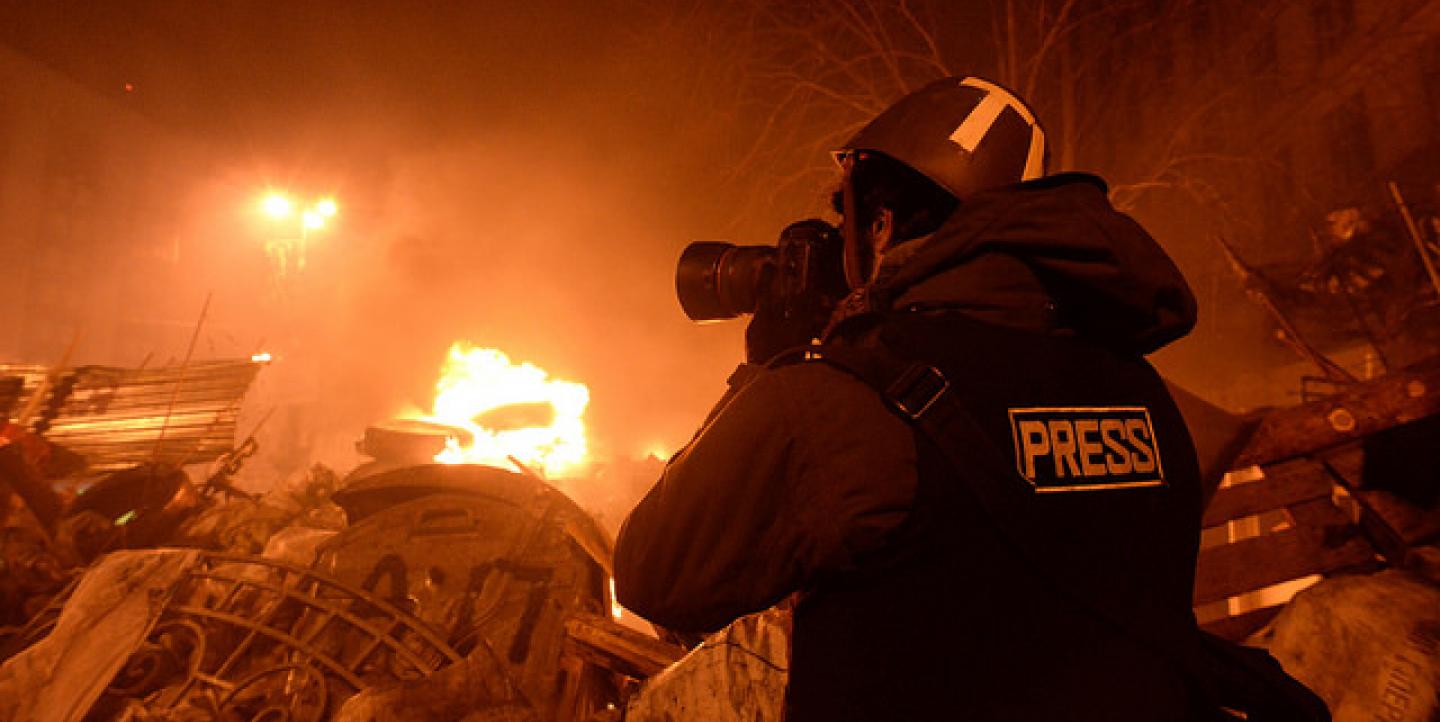A young reporter spoke excitedly about his experiences on the frontlines in eastern Ukraine. He described Russian-backed separatists shelling villages and sending civilians running for their lives.
“I can’t believe this is happening in my homeland,” said Anton Skyba, who runs a small information agency and had never covered a war before. He is lucky to be alive.
When he ventured into territory held by pro-Russian forces, he was captured, beaten and accused of spying, he said. After being held for several days, he was turned over to another rebel group, which freed him.
Skyba recalled these events during the November 2014 Media Forum held in Lviv, Ukraine, near the Polish border. The crowd was abuzz with reports that Russian troops and tanks were pouring over the border. Four months later, Business Insider included Ukraine on its list of the world’s 15 worst war zones.
“Our journalists are not experienced war correspondents. They are not ready for this,” said forum organizer Ostap Protsyk. “[The Russian invasion] is the biggest story for us. Our media have to cover it.”
Skyba's story echoes a harrowing trend of local journalists switching from education, politics and crime beats to reporting on the violence in their back yard when conflict strikes. Many have paid dearly.
The Committee to Protect Journalists reports that nearly nine in 10 work-related fatalities since 1992 involved journalists covering news in their own country. More than 95 percent of journalists jailed worldwide are local reporters, photojournalists, bloggers and editors, according to CPJ.
After the Lviv Media Forum, around 40 members of the Ukrainian press corps gathered for a workshop on safety tips. Among the advice:
- Never ride in the back seat of a two-door car in a combat zone. It is a death trap. Always keep windows down, doors slightly ajar and seat belts unbuckled.
- Befriend villagers and refugees. They know the terrain and have pipelines to fighters.
- Keep mobile phones charged, fill gas tanks and always carry extra batteries. Pack water, snacks, toilet paper and a first aid kit.
- Never do anything for fun in a war zone. It could get you killed.
With the 2015 Global Risks report listing international conflict as the greatest threat to world stability over the next 10 years, the realities of 21st century conflict underscore a key point: The need for safety training for journalists has never been greater.
Global media watchdogs have compiled resources and guidelines for journalists covering conflict. Here is a sampling of what's available online:
- Journalists Safety Guide: Covering the News in a Dangerous and Changing World - Committee to Protect Journalists. Handbook has a section on domestic journalism and deals with practical issues such as approaching checkpoints and hostile subjects. Available in English, Spanish, French, Arabic, Russian, Somali, Farsi, Portuguese and Chinese.
- Handbook for Journalists - Reporters Without Borders. Lists of useful tips and excellent chapter on safety behind the lines. Available in English, French, Urdu and Kurdish.
- IWPR Training Manual - Institute for War and Peace Reporting. Contains chapter on journalist safety and is available in English, Arabic, Russian, Kazakh, Kyrgyz and Tajik.
- Disaster and Crisis Coverage - International Center for Journalists. Contains chapters on managing crisis coverage, reporting crises and staying safe.
- SEEMO Safety Net Manual - South East Europe Media Organization. Includes chapter on reporting during demonstrations, social unrest and other violent situations. Twelve different language versions available for all SEEMO countries.
- The Journalist Survival Guide - SKeyes Center for Media and Cultural Freedom at the Samir Kassir Foundation. The guide will prepare you for action in case of a tear gas attack, shooting, injury and other risks. Available in English and Arabic.
- Reporting Atrocities: A Toolbox for Journalists Covering Violent Conflict and Atrocities - Internews. The 7-chapter guide features a whole section on practical strategies for keeping yourself safe in a warzone.
- Tragedies and Journalists - Dart Center for Journalism and Trauma. The free PDF lists ways for journalists to battle the psychological effects of covering traumatic events.
If you know of any other free resources we can add to this list, please let us know on Facebook, Twitter or in the comments below.
Image CC-licensed on Flickr via Global Panorama


